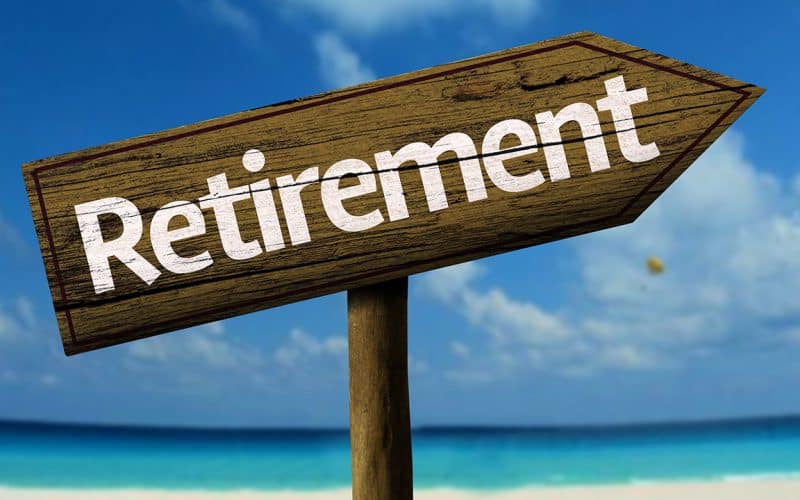Over the past decade, 401(a) has become a popular term on the lips of government and private employees alike. It turns out individuals are now more conscious about the future which is exactly what a 401(a) plan is meant for. A means to secure the future financially. Yea, there are tons of options out there also capable of achieving this purpose but it will be unwise to attempt going for every one of them at the same time. So this post and its likes will come in series, feeding you with all the information you would need to make a more calculated decision as to which one to go for. However, for the purpose of this article, we will only go through what you should know about 401(a) plans and the 401(a) rollover to IRA.
This is because, for some of us, this is still a strange term. The ensuing paragraphs will guide every step of the way.
So let’s get cracking …
What is a 401(a) Plan?
Just like its direct counterpart, 401(k), the 401 series is a sort of retirement savings plan whose name was coined out from Section 401 of the US Internal Revenue Code. These plans literally help to foster a stress-free retirement for government employees.
But just in case you need a general definition for 401(a) plans, here is one;
A 401(a) is termed as a retirement savings plan that affords government employees the luxury of accumulating dollars on a tax-credit basis for the purpose of retirement in which the aforementioned contributions come from the participant, the employer, or both.
In other words, for this to work effectively, the contributions from the employers and employees will have to be on an agreed percentage basis.
How Do 401(a) Plans Work?
Tons of retirement plans exist for different employers and employees alike, with each of them coming with restrictions, stipulations, and more favorable conditions for certain kinds of employees.
For the most part, 401(a) plans are designed to target individuals working in non-profit establishments, government agencies, and educational institutions. Therefore it’s safe to say that beneficiaries of this plan include teachers, government employees, support staff, and administrators. Basically, all fall under the general term, “Civil Servants.”
Like I mentioned earlier, there are other 401-based plans asides 401(a). A typical example is the 401(k) plan (a plan that features profit-based organizations). But mind you, the terms and conditions of 401(a) plans prohibit employees from accessing 401(k) plans on a go.
On the flip side, if an individual decides to leave his employer, he/she has the option of moving their funds from their 401(a) accounts to a 401(k) or an individual retirement account.
Furthermore, to a large extent, employers control a huge part of this retirement plan, using them as bait to keep employees for longer periods of time. They literally dictate the vital aspects such as contribution amounts and limits, vesting schedules, eligibility criteria, and so on.
However, to become a beneficiary of 401(a) plans, you need to have been working in the establishment for a minimum of 2 years with a minimum age limit of 21 years. While this is a general condition for participation, employers wield the power to enforce what condition works best for them.
Contributions for a 401(a) plan
401(a) plan contributions could be either voluntary or mandatory which could be paid on either a pre-tax or post-tax basis.
Yea, that almost sounded like the employee had some sort of options to pick from here.
Well, my advice is, pay less attention to how it sounded and come to terms with the fact that the employer is always the dictator. They even go as far as contributing these funds on behalf of their employees. In other words, on default, the funds are set to go off their salaries.
But these deductions are often made on either a percentage or specific-dollar-range basis. Some employers are often lenient enough to involve employees, especially with the percentage issues.
For voluntary 401(a) contributions, it is important to note that employers put the peg at 25% of the employee’s yearly pay.
Investments for a 401(a) Plan
The tyranny of employers continues here as they remain in control when it comes to employees’ investment choices.
But here’s the great part; they are in a way obligated to pick only the most secure investment options for their employees. This is in a bid to clamp down on investment risks.
Furthermore, by the end of civil service, the plan guarantees a confident level of retirement returns. However, this would also require a level of commitment from the employee to meet certain retirement goals.
Vesting and Withdrawals for a 401(a) Plan
Conventionally, all 401(a) contributions and subsequent yields often undergo vesting immediately. By vesting, I mean
the process of earning an asset, like employer-matched contributions to your 401(a) over time.
Vesting schedules set up by employers are major determinants to becoming completely vested. For some employers in 401(k) plans, it has become a common practice to link vesting conditions to years of service. This basically acts as an incentive to keep employees in service for a longer period of time.
Furthermore, 401(a) withdrawals are often subjected to income tax withholdings plus a withdrawal penalty of 10%. Exceptions to this rule include scenarios where the employee clocks 59 and half years, becomes disabled, dies, or gives consent to roll over their funds to certified retirement or IRA plans. In this case, it would have to go through a system known as a direct trustee-to-trustee transfer.
Qualifying For Tax Credits
Eligibility for Tax Credit is pretty simple. Basically, any employee under the 401(a) plan can qualify. However, while an employee can have both an IRA and a 401(a) plan simultaneously, tax benefits for one of them will have to be forfeited if he decides to run both plans at the same time.
401(a) Rollover to IRA
401(a) rollovers to IRA may have sounded like an impossible feat before now. But you should have realized earlier in this post that sounds are deceptive.
You can undeniably roll over your 401(a) varieties into IRA while avoiding taxes in the process. This comes with a condition though; you need to observe the rules of the Internal Revenue Service. And more importantly, plans in question need to be categorized under Qualified Employer Plans (plans that meet the IRS requirements)
Lucky you, 401(a) plans fall under this category. However, it is important to note that there are some exceptions. Some of which include; substantially equal periods of payments, amounts distributed to correct excess distributions, hardship distributions, and minimum distributions.
Disclosures of 401(a) rollover to IRA
Before attempting a 401(a) to IRA rollover, there are a series of disclosures, and considerations you need to be aware of. The most important of which is being aware of your responsibilities and rights. And in this case, the right to a free tax rollover to IRAs. You should also understand the difference in rules between the IRA and the old plan. Stating and discussing these rules are beyond the scope of this post, hence we’ll be going through this in a different one.
Withdrawals
When you quit your job, you are free to withdraw funds from your account as you see fit, but you are normally not obligated to do so until you reach the age of 72. However, you have the freedom to withdraw funds as needed, including the option to have payments automatically placed into your bank account each month. Payments are often taxed, and an IRS-imposed 10% early withdrawal penalty may apply to payments made before the age of 59 and a half.
While you are working, your withdrawal options are limited and vary per plan. Options may include the opportunity to withdraw voluntary after-tax contributions at any time or after reaching a specified age (e.g., 59 and half, 70 and half, or the plan’s Normal Retirement Age). You may also be able to borrow money from your account.
Make a strategy for withdrawing funds from your account, both to manage your tax burden and to provide for your future requirements. View the Special Tax Notice Regarding Plan Payments for more information.
Benefits for Survivors
You name a beneficiary or beneficiaries to inherit any leftover assets in the event of your death. Designating beneficiaries can help guarantee that your assets are distributed in accordance with your desires, avoid the potential costs and delays of probate, and provide non-spouse beneficiaries with significant tax benefits.
Please keep in mind that if you are married, most plans require your spouse to be your beneficiary for the entirety of your account, unless your spouse waives this right.
Benefits of 401(a)
Participation has the following advantages:
- Reducing current income taxes while saving for retirement.
- If a participant changes jobs, they can consolidate their savings in another qualifying retirement plan or a Traditional IRA. Earnings compound tax-free.
- State income tax may not apply to distributions (varies by state).
- Contributions to a 401(a) plan, unlike 457 plans, are not subject to FICA taxes.
- Participants may also enroll in a 457(b) deferred compensation plan, if one is available, with no contribution limits reduced.
- Flexible payment choices are available; you set the payment schedule and retain control of your account even after payouts are taken.
- Your selected beneficiaries are entitled to all remaining vested assets in the case of your death.
401(a) vs. 401(k): What’s the Difference?
Below are the differences between 401(a) and 401(k).
What is a 401(a) Plan?
Rather than firms, 401(a) plans are typically offered by government agencies, educational institutions, and charitable organizations. These programs are typically customized and can be offered to important employees as an additional incentive to stay with the firm. Employee contribution amounts are typically determined by the employer, and the company is also required to contribute to the plan. Contributions can be made either before or after taxation.
An analogous plan known as a 403(b) plan is frequently offered by educational institutions.
Because the contribution and vesting timelines in a 401(a) are established by the sponsoring business, these plans can be set up in ways that encourage employees to stay. Employee participation is frequently required. Employees who leave can normally withdraw their vested funds by rolling them over into another qualifying retirement savings plan or purchasing an annuity.
The employer determines the plan’s investment options, which are typically limited. Only the safest, most conservative investment options may be available in government-sponsored 401(a) plans.
What is a 401(k) Plan?
Employers in the private sector are more likely to provide a 401(k) plan. A standard 401(k) allows employees to contribute pre-tax cash from their paychecks to the plan and deduct their contributions from their taxes. Roth 401(k)s, on the other hand, are funded using after-tax earnings and offer no tax benefit at the outset. Employees choose how much to contribute, up to IRS restrictions, and many employers match at least a portion of their employees’ contributions, though this is not legally required.
The employer that sponsors the 401(k) plan chooses which investment options will be offered to participants, albeit as part of their fiduciary duty, they must be mindful to give a broader range of possibilities than 401(a) plan sponsors frequently do. Plans typically provide 15 to 30 investment options, while research has shown that too many alternatives can be confusing to members.
However, now that the SECURE Act of 2019 has been passed, employees may see more annuity plans offered as investment options in their 401(k) programs. This is due to the SECURE Act, which now shields employers from being sued if the annuity insurer fails to make annuity payments to plan participants.
Assets in a 401(k) plan accumulate tax-deferred and are taxed as ordinary income when withdrawn in the case of classic 401(k)s. Roth 401(k) withdrawals are generally tax-free.
Is 401A the Same as 401K?
The 401a is a retirement plan offered by public companies and non-profit organizations, while the 401k is a retirement plan offered by private firms. The 401k allows an employee to choose how much to contribute from their paycheck, whereas the 401a is always determined by the business.
What Is 401 A and B?
Companies can force qualified employees to enroll in 401(a) plans and set contribution models, but employers must also contribute to these plans. Enrollment in 403(b) plans, on the other hand, is entirely elective.
Can I Withdraw My 401A?
When employees reach the age of 59 and a half, they can begin withdrawing funds from their 401(a) plan without penalty. If they make any withdrawals before 59 and a half, they will be subject to a 10% early withdrawal penalty. If they haven’t already begun to withdraw when they reach 70 and a half, they must do so.
Is a 401A a Pension?
Pensions are defined benefit plans, whereas 401(a)s are defined contribution plans. Employees who have pensions benefit from a fixed monthly income upon retirement; their company will continue to make a fixed monthly payment to them for the rest of their lives.
What Category Is 401A?
A 401(a) is a plan for saving money for retirement. You can’t open a 401(a) or other employer-sponsored retirement plans like a 401(k) or 403(b) on your own, like you can with an individual retirement account (IRA).
In Conclusion
While it is natural for most employees to be dismissive about retirement plans now, reports have confirmed that over time, this is usually not the right play. If you take the time to ask questions, you would find out that this set of people end up with regrets.
This doesn’t mean I wholeheartedly endorse retirement plans as the best investment option, it just means that as civil servants investment options are usually limited. And most times, a pretty low salary scale is usually a factor. But regardless of this factor, if we really look at this logically, retirement plans help in ways you can’t comprehend yet. Plus the investment side has a great touch to it even though it usually feels like you have literally no control over the process.
Nevertheless, trust me when I say this is better than nothing because the future is closer than you think.






